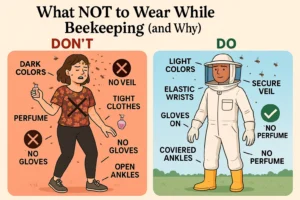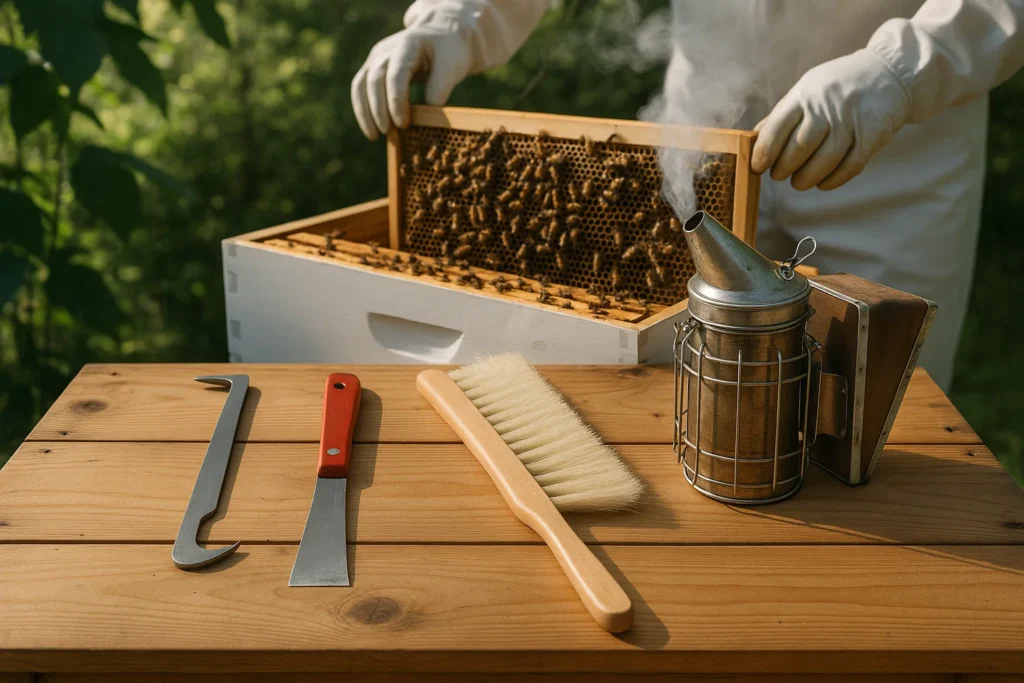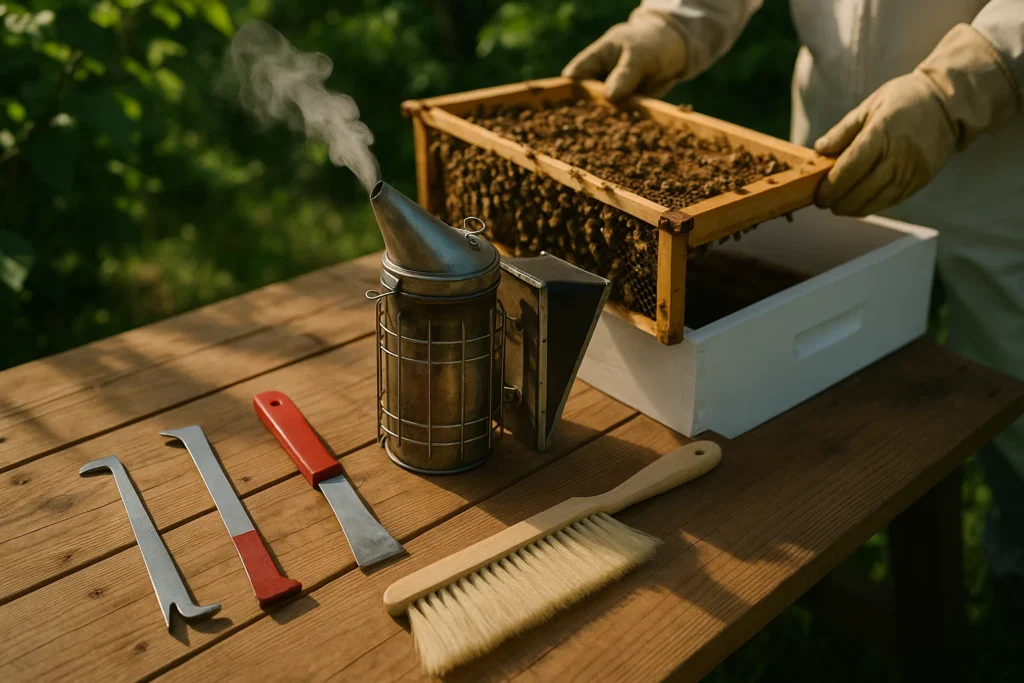
🐝 Gear Up. Stay Safe. Protect the Hive. 🌼
Hive management in beekeeping involves the careful oversight and maintenance of beehives to ensure the health and productivity of honeybee colonies. This includes tasks such as hive inspections, pest control, and honey extraction.
Having the right gear, including bee suit and accessories, is essential for successful hive management to stay protected and efficient in your beekeeping endeavors. Proper equipment not only facilitates the tasks involved in beekeeping but also ensures the safety of beekeepers and the well-being of the bees.
Hive inspection tools are indispensable for beekeepers to assess the condition of their hives and monitor the health of their colonies. Essential tools include hive tools for prying apart hive components, smokers for calming bees during inspections, and bee brushes for gently moving bees aside.
Each hive inspection tool serves a specific purpose. Hive tools, for example, come in various designs, including J-hooks and flat blades, to accommodate different hive structures. Smokers generate smoke to pacify bees and minimize disruptions during inspections, while bee brushes allow beekeepers to remove bees without harming them.
Effective use of hive inspection tools requires proper technique and caution. Beekeepers should approach hives calmly and methodically, using smoke judiciously to avoid agitating the bees. Additionally, regular maintenance of tools, such as cleaning and sharpening hive tools, ensures their longevity and functionality.

Hive maintenance equipment is essential for preserving the health and cleanliness of beehives. This includes items such as hive stands for elevating hives off the ground, hive feeders for supplementing bee nutrition, and entrance reducers for controlling hive access.
Hive stands provide stability and protection for hives by keeping them off damp or uneven surfaces, while hive feeders offer a convenient way to provide supplemental food, such as sugar syrup, to bees during times of scarcity. Entrance reducers help regulate hive ventilation and defend against intruders like pests.
Proper use and maintenance of hive maintenance equipment are crucial for optimal hive management. Beekeepers should regularly inspect and clean hive stands and feeders to prevent mold or pest infestations. Additionally, monitoring hive entrances and adjusting reducers as needed ensures hive security and stability throughout the seasons.
Protective gear is paramount in hive management to safeguard beekeepers from bee stings and potential injuries. It serves as a crucial barrier between beekeepers and the bees, minimizing the risk of painful stings and allergic reactions.
Essential protective gear includes bee suits, gloves, and veils. Bee suits provide full-body coverage, gloves protect hands and wrists, and veils shield the face and neck from stings.
When selecting protective gear, beekeepers should prioritize comfort, durability, and effectiveness. Factors such as material breathability, fit, and visibility are key considerations. Regular inspection and maintenance of gear ensure continued protection during hive management tasks.

Tools for honey extraction are essential for harvesting honey from beehives efficiently and safely. These tools facilitate the extraction process, from uncapping the honeycomb to filtering and bottling the honey.
Honey extraction equipment includes honey extractors, uncapping knives, and strainers. Extractors spin honey frames to release honey, uncapping knives remove wax caps from honeycomb cells, and strainers filter out impurities from the honey.
Utilizing proper techniques and tools ensures the safe and efficient extraction of honey. Beekeepers should employ gentle methods to minimize damage to honeycomb cells and maintain hive hygiene throughout the extraction process.

Queen rearing and marking play vital roles in hive management, contributing to colony health and productivity. These processes involve selecting and marking queen bees for easy identification and management.
Equipment for queen rearing and marking includes queen cages, marking pens, and grafting tools. Queen cages house newly emerged queens, marking pens apply color codes to queen bees for identification, and grafting tools aid in transferring larvae to queen cells.
Beekeepers can follow step-by-step procedures using specialized equipment to rear and mark queen bees successfully. Proper timing, technique, and hygiene are essential for the success of queen rearing and marking endeavors.
Transportation and handling gear are essential for safely moving beehives between locations and during routine hive inspections. Proper handling minimizes stress on bees and reduces the risk of hive damage or disturbance.
Equipment includes hive carriers, hive straps, and beekeeping trailers. Hive carriers provide a secure grip for lifting and transporting beehives, straps secure hive components during transport, and trailers offer a convenient means of transporting multiple hives.
Beekeepers should adhere to safety guidelines and best practices when moving and handling beehives. Using appropriate gear and techniques ensures the well-being of bees and the integrity of hive structures during transportation and handling operations.

Supplementary gear and accessories enhance hive management practices and contribute to the efficiency and productivity of beekeeping operations. These tools offer additional support and functionality beyond the basics of hive management.
Equipment includes swarm catchers, hive scales, and beekeeping journals. Swarm catchers capture swarming bees, hive scales monitor hive weight for management purposes, and beekeeping journals record hive observations and activities.
Integrating supplementary gear and accessories into hive management routines maximizes their effectiveness and benefits. Beekeepers can customize their practices and address specific needs or challenges to optimize hive health and productivity.
In conclusion, mastering the art of hive management requires more than just knowledge and skills—it demands the right tools and equipment. From hive inspection tools to honey extraction equipment, queen rearing gear to hive transportation accessories, each piece plays a crucial role in ensuring the health, productivity, and safety of beekeepers and their colonies. By investing in high-quality gear and maintaining it diligently, beekeepers can elevate their practices, optimize hive management outcomes, and ultimately cultivate thriving beehives. Let’s continue to prioritize gear acquisition and maintenance, fostering a community of beekeepers dedicated to the well-being of their bees. Share your thoughts and experiences with hive management gear in the comments below!
